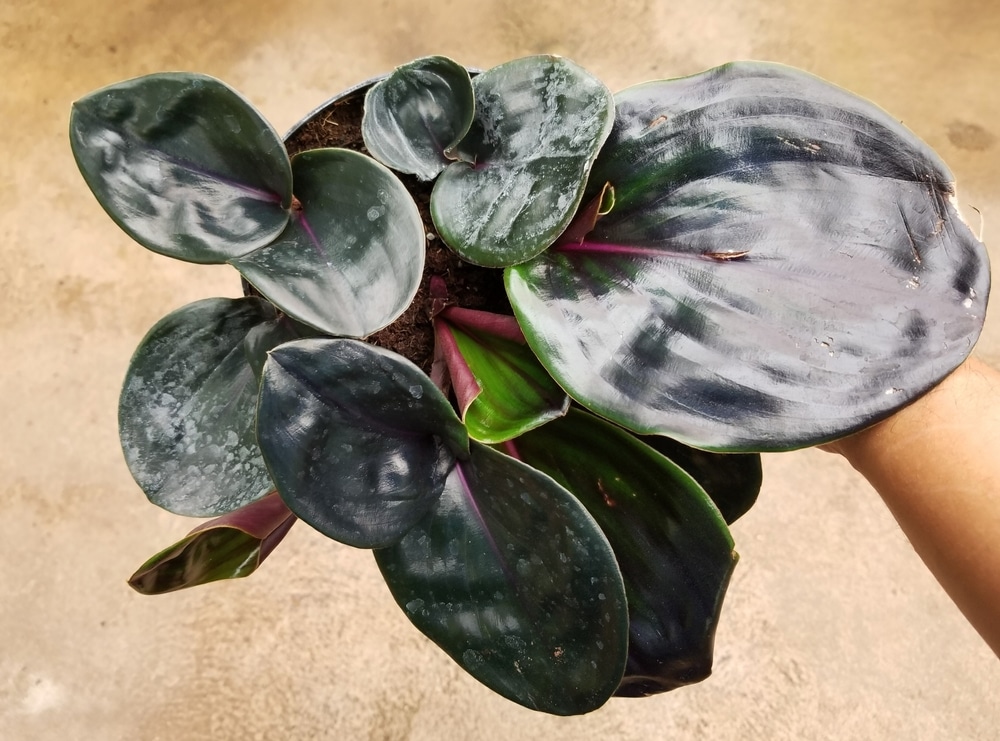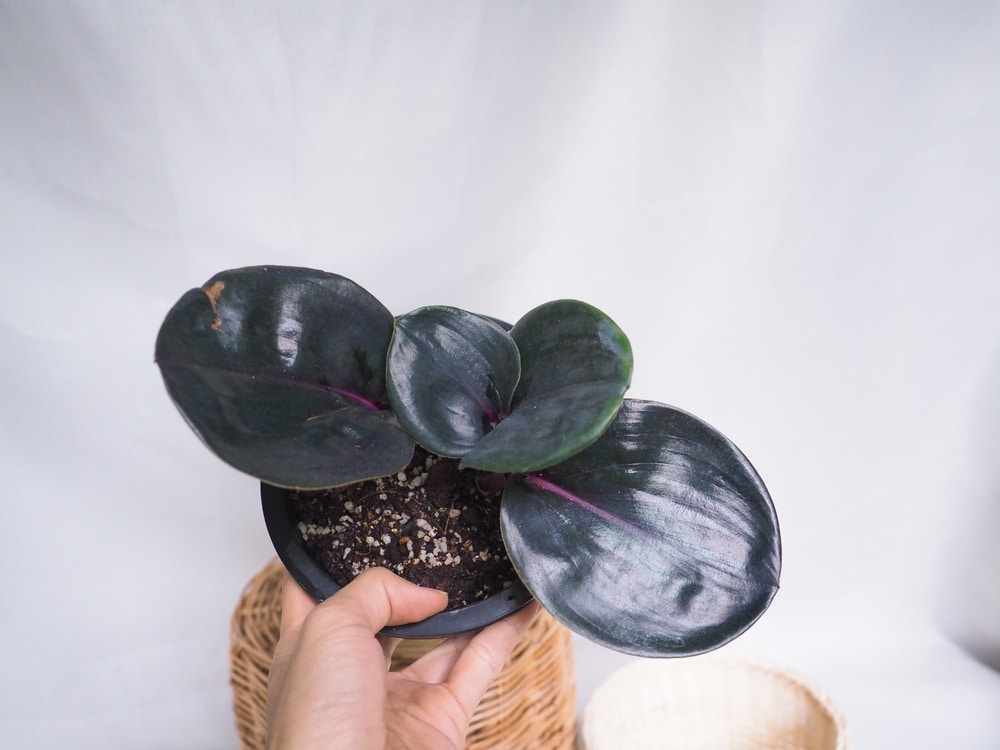Are you bored of the “traditional” houseplants? Then, you should learn more about the Geogananthus Ciliatus! This rare plant displays deep green shiny foliage that looks almost black.
If that sounds attractive enough, you may be surprised to learn that its leaves also have an eye-catching purple stripe that becomes more visible as the plant matures.
Sadly, this plant is challenging to find! So, if you can get your hand on one of them, don’t hesitate to take it! And keep reading this essential guide we put together to learn more about this unique-looking houseplant!
| Botanical Name | Geogananthus ciliatus |
| Common Name | the Geo Plant |
| Plant Type | Perennial |
| Flower Color | In nature, the plant produces tiny but eye-catching deep blue or purplish flowers with three petals. But as a houseplant, your Geo Plant will rarely bloom. |
| Size When Mature | Up to 24 inches wide and 8 inches tall |
| Bloom Time | Not applicable |
| Sun Requirements | Bright, indirect light |
| USDA Hardiness Zones | 10-12 |
| Soil PH Range | 6.1-7.3 |
| Soil Type | Well-draining, rich, and moist |
| Water Needs | Medium |
| Native Area | South American Rainforests |
What you Need to Know About Geogenanthus Ciliatus
Geogenanthus Ciliatus is a rare houseplant native to the tropical forests in South America that, despite its sophisticated looks, doesn’t require too much attention from your side.
In its natural habitat, this lush plant grows on the forest ground. As a houseplant, you can grow it in containers, where it can add an elegant touch to any location. However, you can even make it a ground cover outdoors (if you live in a suitable USDA hardiness zone).
There are no reports of the plant being toxic to humans or animals. Still, you may want to keep an eye on your curious pets or kids and prevent them from munching on the plant’s leaves.
How to Care for Geogananthus Ciliatus
Luckily, growing a thriving Geogenanthus Ciliatus isn’t anything out of this world. However, you must learn about its needs and requirements to be successful. So, jump to the following sections to learn how to recreate the ideal conditions for your plant’s growth!
Light
You must pay attention to where you locate your plant. Avoid direct sunlight, as it may scorch your geo plant’s leaves. Instead, place it under partial shade or indirect light. If you can, consider adding shears to your windows.
In terrariums, consider growing your plant under florescent bulbs: doing so will allow you better control over the lighting it receives. Also, don’t forget to rotate your plant to ensure it grows evenly on all sides.
Water and Soil Needs
Water your plant only when the soil feels dry. Doing so will prevent overwatering issues. The key is to keep the soil moist but not soggy. And to do so, you must choose a well-draining medium. You can use an average houseplant potting mixture (one for African violets will give you the best results) or make one yourself by mixing peat moss, perlite, and vermiculite.
Also, consider amending the soil and keeping pH levels between 6.1 and 7.3.
Temperature Requirements
Even if a Geogenanthus Ciliatus may adapt to several temperatures, it will perform much better if you grow it in a room where the conditions are stable. Avoid exposing it to temperatures below 50°F. So, place your plant far from drafty windows or the air conditioning.
Also, avoid sudden environmental changes, which might kill your plant. Remember that the ideal temperature for growing a thriving Geo plant is between 55 and 75°F.
Fertilizer
Add some extra nutrition to your plant during the spring and summer to boost its growth. For best results, use a balanced organic product. Dilute it at half strength to avoid burning your plant.
Common Diseases
Despite not being particularly challenging to grow, you must pay attention to your Geo plant. Some of the most common issues result from overfertilization and overwatering. So, make sure you follow our tips to prevent them.
Also, prevent diseases by providing your plant with all it needs to thrive. Doing so will make it less susceptible to suffering from them.
Keep an eye on pests and take proper measures as soon as you notice their presence to prevent infestations. Geogenanthus plants are particularly susceptible to spider mites, mealybugs, and thrips. You can treat attacks by applying neem oil. However, you will have to destroy your plant (or remove the damaged parts) with severe infestations.
You May Also Like: Philodendron Birkin Growth and Care Guide


